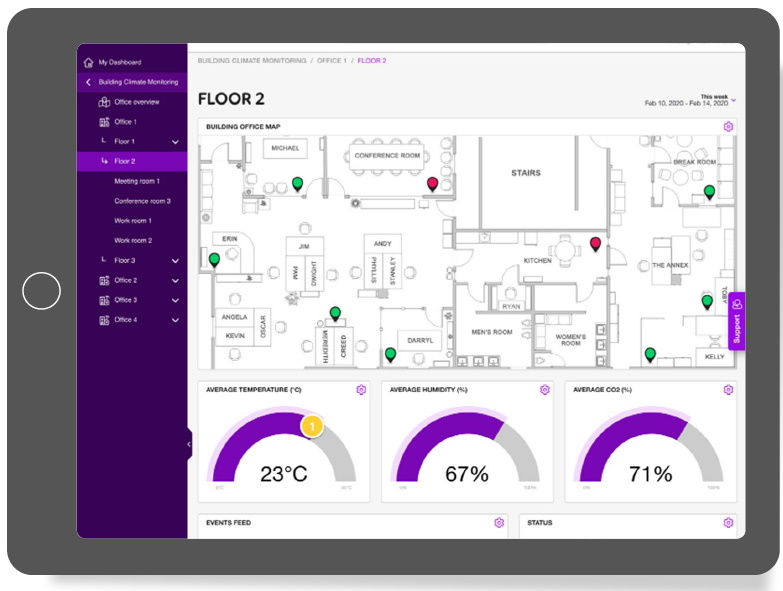Building Pain Point 4: Inefficient usage of facility and assets
From meeting rooms to laundry machines, shared facilities are difficult to manage. In this article we present available digital solutions that can help optimize the usage of buildings and their assets.
This is an extract from: Digitalization of Buildings in the Nordics & Baltics.
Many office workers are familiar with the problem of fully booked but still empty meeting rooms. Analog solutions include weekly schedules posted on doors, “house rules” to guide appropriate scheduling behavior and fees associated with room cancellations.
Other shared equipment presents a secondary level of complexity, as the equipment can be moved. From hospital wheelchairs to carpools, it is not just a matter of knowing if they are available, but also where they are. Again, we find that a lack of data is the core problem when it comes to optimized scheduling and utilization.
Digital solutions to optimize the usage of the facilities and assets
Crowd movement data and other digital solutions are on the rise and vitally important for the future of facility management. Below we look at some examples.
Occupancy monitoring
Real-time movement sensors make it possible to detect which meeting rooms are in use. This data can be fed back into a centralized booking system and rooms that have been booked but not used can be reallocated. This also generates data about how often rooms are used, and for what duration. This data can also be fed into lighting and temperature systems to optimize energy efficiency. For example, air conditioning could be turned on five minutes before a booking or triggered by movement if not booked.

Location insights
Crowd movement data represents one of the most promising tools for the real estate industry. By analyzing anonymized data from mobile devices moving within cellular networks, it is possible to identify how many people are in different locations at different times. This provides insights about, for example, which locations have the most pedestrian traffic. Crowd movement data can also determine how and where people travel. These insights can be valuable to facility owners, development companies, municipalities, facility management companies and retailers. Crowd movement analysis offers a lot of value for facility owners who are involved in urban design planning. It enables them to predict the effect on a neighborhood of different building types, parking lots, urban parks and so on.
Newsec, a full-service property firm, uses crowd movement data in Finland to gain better insight into crowd movements. Several municipalities in the Nordics and Baltics are also looking at the use of crowd movement data to monitor the impact of city development.
Another application area for crowd movement data is for store and restaurant owners, who might use data on the number of people passing their location, as well as the number of people entering, to optimize their business and measure the impact of changes. That data can be combined with data on the share of customers that end up buying something, to understand the impact of seasonal campaigns or how interior redesign influences the customers’ willingness to buy. This helps brick and mortar stores get on par with their e-commerce equivalents, who have long had an information advantage with access to customer data derived from their web sites traffic.
Crowd movement data can also be used by facility owners to determine the rent cost, by showing the potential number of customers passing by a store location.
Crowd movement data is indeed a growing area and its importance will only increase as the number of ways to extract insights increases.
Whereas crowd movement data gives insights of people’s movement patterns, IoT insights combine large volumes of data from multiple sources to enable advanced analytics. IoT insights become even more meaningful when used in conjunction with predictive maintenance, which relies on large volumes of data to accurately predict failure. However, specific technical failures in a facility occur very few times leading to limited historical data unless it can draw learnings from other similar installations in other facilities. Most of all, IoT insights allow for the rapid scaling of many IoT-enabled solutions as they immediately get fueled by data from other sources to generate insights from the get-go.
Cookie notification
Cookies allow us to optimize your use of our website. We also use third-parties cookies for advertising and analytics. Please read our Cookie Policy for more information.

